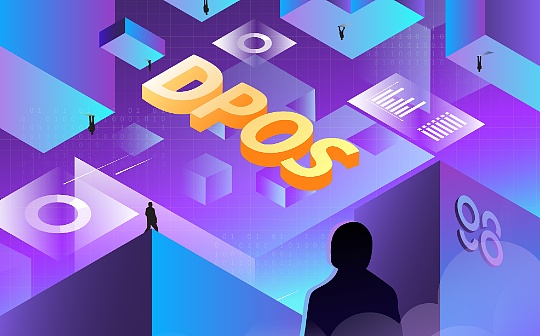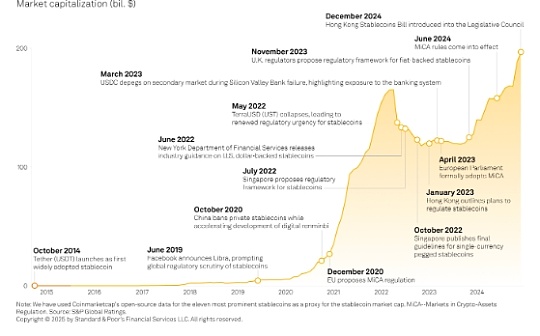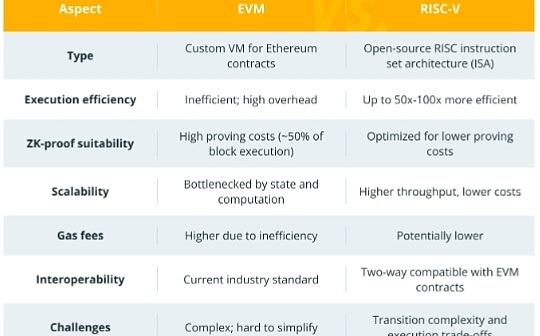
Author: Shailey Singh, CoinTelegraph; Compilation: Baishui, Bitchain Vision
1. What is entrusted proof of interest (DPoS)?
DPoS is an evolution of the Proof of Stake (PoS) consensus mechanism that aims to provide enhanced scalability, efficiency, and democratic governance.
Blockchain technology has revolutionized the way we perceive and process digital transactions mainly through its decentralized nature and consensus mechanism.The main purpose of these decentralized mechanisms is to ensure that there is no central gateway when managing blockchain transactions and data records.Instead, the consensus mechanism relies on network participants to validate transactions and add them as new blocks on the chain.
Among various consensus algorithms, a highly concerned mechanism is entrusted proof of equity.DPoS is a variant of the classic proof of stake consensus mechanism.
Daniel Larimer proposed the DPoS concept in 2014 as an enhancement of the traditional PoS consensus mechanism aimed at improving efficiency and scalability.Larimer first shared his vision in a Bitcointalk forum post, which led to the actual implementation of DPoS and the launch of BitShares in 2015.
This marks the beginning of DPoS in blockchain technology, laying the foundation for its adoption in other projects such as Steem and Eos.Eos, in particular, used the consensus mechanism to conduct one of the largest initial token offerings (ICOs) in the cryptocurrency industry in 2017, attracting high attention to DPoS and highlighting the potential of DPoS in achieving high performance and decentralized governance..
2. What are the differences between DPoS and other consensus mechanisms such as PoS?
Unlike traditional PoS, DPoS uses a voting system to elect representatives for block validation, making the process more democratic and scalable.
The key to understanding all consensus mechanisms is how to reach consensus.While the Bitcoin blockchain introduces the first mechanism to reach consensus on blockchain through Proof of Work (PoW), there are some other ways for blockchain networks to reach consensus.PoS was introduced in a 2012 academic paper, written by Sunny King and Scott Nadal as a new consensus mechanism to solve the problem of high energy consumption of Bitcoin mining.
PoS is one of the most common consensus mechanisms, and the Ethereum ecosystem adopted it in 2022.Gradually, various other security iterations of PoS are beginning to emerge, including hybrid PoS-PoW, pure PoS, and 2014 commissioned PoS.
In a DPoS system, network users vote to delegate block verification rights to a selected group of witnesses or block producers.This process aims to address some of the democratic limitations of the standard PoS algorithm by ensuring that the power to validate transactions is distributed among elected representatives, rather than concentrated in the hands of a few wealthy stakeholders.
This means that unlike traditional PoS where stakeholders directly validate transactions, DPoS allows token holders to elect representatives responsible for validating blocks.
In a DPoS system, network users vote to delegate block verification rights to a selected group of witnesses or block producers.This process aims to address some of the democratic limitations of the standard PoS algorithm by ensuring that the power to validate transactions is distributed among elected representatives, rather than concentrated in the hands of a few wealthy stakeholders.
In this way, DPoS simplifies the block verification process, thereby shortening transaction confirmation time.A limited number of elected representatives also enhances the scalability of the network.
3. How does DPoS work?
The core mechanism of DPoS revolves around voting, delegating and verification.
DPoS enhances traditional PoS systems by incorporating election mechanisms, where network participants vote for representatives responsible for validating and creating blocks.This process involves four key players: voter, witness (or block producer), representative and validator.
voter
In a DPoS system, each network participant can become a voter even if he holds a minimum amount of native tokens, without the minimum stakeholder token participation requirement.Voters play a vital role in cyber governance by electing witnesses and representatives and participating in the decision-making process through governance proposals.Voting rights are proportional to the number of tokens held, which means that users with more tokens have greater influence.
Voters can choose to vote on their own or delegate the right to vote to another person.Their main responsibility is to select witnesses or block producers because these entities are directly involved in the block production process.Therefore, voters are motivated to choose trustworthy and capable candidates to ensure the smooth operation and safety of the network.
Witnesses (block producer)
Witnesses, also known as block producers, are nodes favored by token holders to verify transactions and create new blocks.These entities are crucial to the operation of blockchains because they ensure the integrity and accuracy of transaction data.After verifying all transactions in a block, the witness receives a block reward, usually shared with voters who support them.

If the Witnesses fail to verify the transaction within the prescribed time, they miss the block and lose the reward.This missed reward is usually passed to the next witness who successfully verifies the block.The system inspires voters and witnesses to act honestly: the goal of voters is to select reliable witnesses to maximize their returns, while witnesses strive to maintain their integrity and reputation to attract votes.
Delegates
Voters elect representatives to oversee governance functions in DPoS.Unlike witnesses who focus on block production, representatives are responsible for making suggestions for improvements and changes to the network.These suggestions range from modifying block size to adjusting block rewards.
Once a representative makes a proposal, it must be voted by a network participant before it can be implemented.Representatives themselves have no right to apply changes directly to the system; their role is to promote and make recommendations for improvement, and then get approval from the community.This separation of responsibilities helps maintain a balanced and decentralized governance structure.
Verification
The validator is a complete node that is used to verify that the blocks created by the witness comply with consensus rules.Unlike Witnesses, any user can become a validator and there is usually no direct financial incentive to perform this role.Verifiers play a key role in maintaining the integrity of the blockchain by ensuring that all blocks comply with established rules and protocols.
4. DPoS incentive and governance mechanism
The DPoS mechanism coordinates incentives from all participants to promote a safe and efficient network.Voters are motivated to choose competent witnesses and representatives to maximize their returns and ensure the integrity of the network.Witnesses and representatives, in turn, are also motivated to maintain their reputation and act in the best interests of the network to retain their position and continue to receive rewards.
The whole process looks simple:

The ongoing voting process and the ability to replace underperforming or malicious actors can help build dynamic and resilient governance models.The system promotes high levels of community engagement and ensures that decision-making power remains distributed to stakeholders.
5. Advantages of DPoS
Compared with other consensus mechanisms, DPoS has several advantages, making it the first choice for some blockchain projects.
DPoS offers several significant advantages that enhance the performance and governance of blockchain networks.One of the main benefits is its accessibility.Unlike PoW systems that require a lot of computing power and dedicated equipment, DPoS allows anyone with native tokens to participate in the voting process and become representatives.This low barrier to entry promotes a more inclusive network, allowing a wider range of participants to participate in consensus mechanisms.
Another significant advantage of DPoS is its scalability.By limiting the number of representatives responsible for block production, DPoS can achieve faster consensus, thereby improving transaction throughput and improving network performance.Furthermore, DPoS is environmentally friendly because it does not require a large amount of energy consumption associated with PoW systems.This sustainability aspect is in line with the growing demand for green technologies.
In addition, the democratic nature of DPoS promotes a more decentralized governance model.The ongoing voting process ensures that delegates are responsible to the community and that stakeholders can actively participate in the decision-making process.This dynamic governance structure can quickly adapt and implement network improvements, thereby enhancing the overall resilience and development of blockchain.
VI. Limitations of DPoS
Although DPoS has many advantages, it also has its limitations and challenges.
One of the main concerns is the possibility of centralization.While DPoS is designed to decentralize decision-making power, the system may inadvertently concentrate power in the hands of a few representatives.
Due to the limited number of elected representatives, there is a risk that a small group of representatives may dominate the network, resulting in centralized problems similar to those found in traditional PoS systems.This concentration of power can put the network at risk of complicity and malicious activity.
Furthermore, DPoS requires a high level of voter participation and awareness.In order for the system to function effectively, voters must have a full understanding of the candidate and their performance.However, smaller stakeholders may feel that their vote is trivial and choose not to participate, reducing the overall robustness of the consensus mechanism.
Furthermore, dependency on a limited number of representatives raises security issues.If most represent collusion or malicious behavior, they may perform 51% attacks, which compromises the security and stability of the network.This vulnerability requires the community to remain vigilant and proactive to ensure that honest and competent representatives are constantly elected.
DPoS represents the evolution of blockchain consensus mechanism.With the development of blockchain technology, DPoS aims to provide a framework for implementing decentralized governance and efficient block verification.








